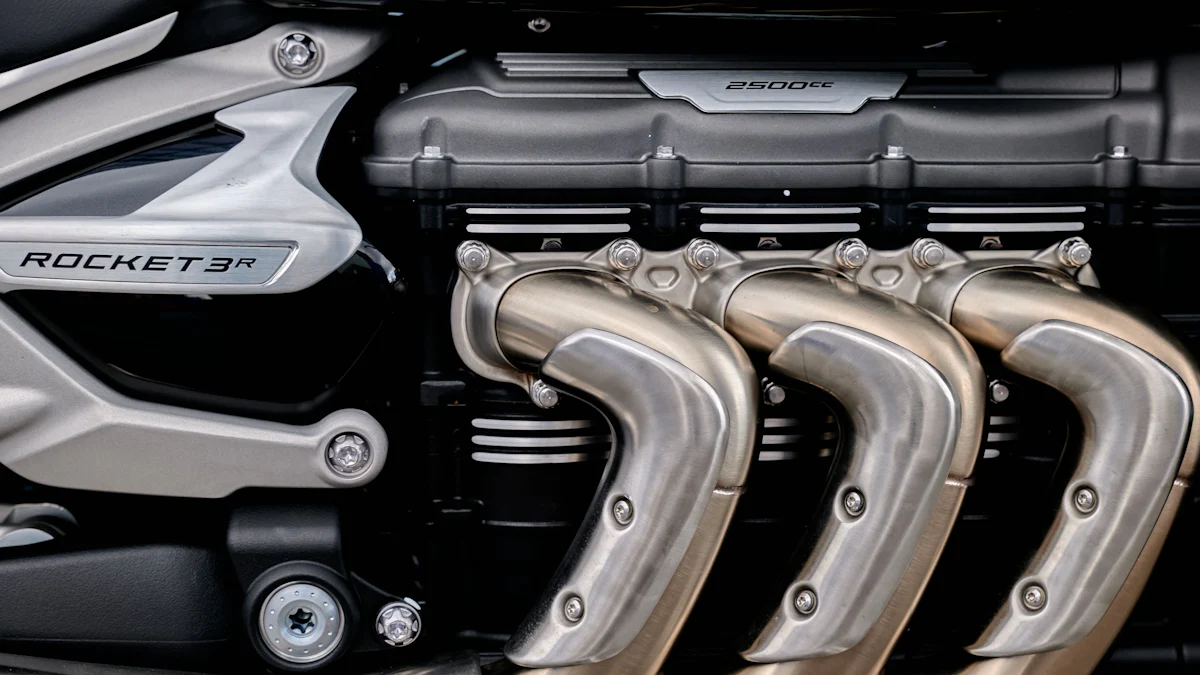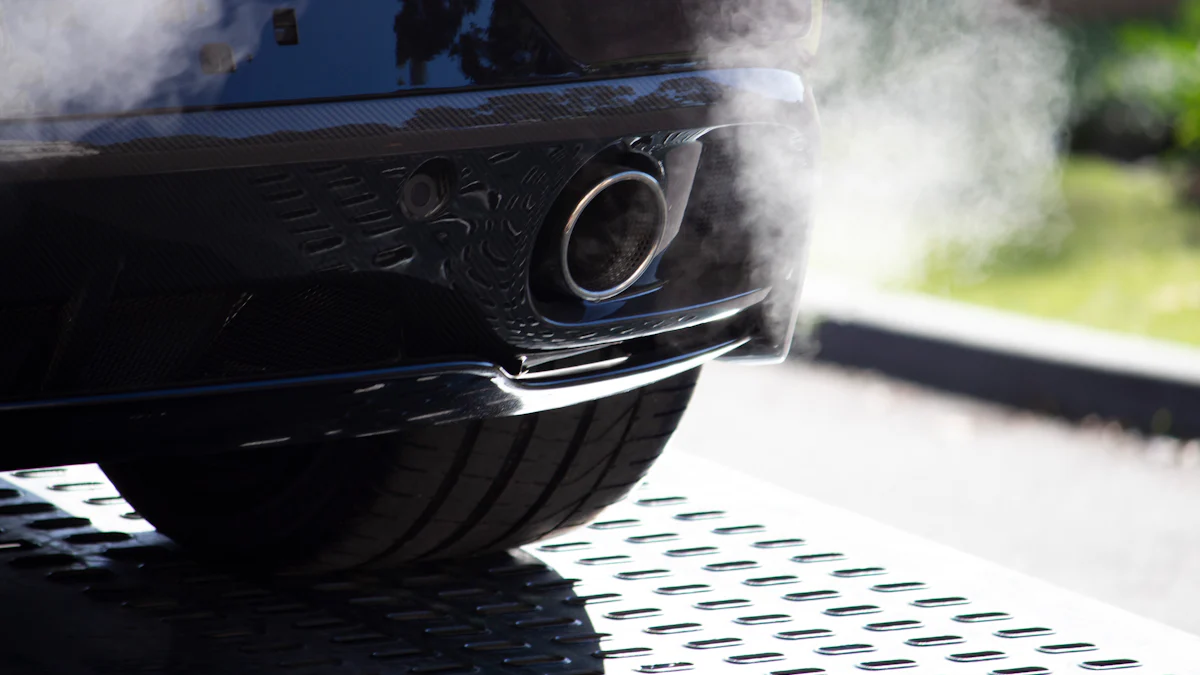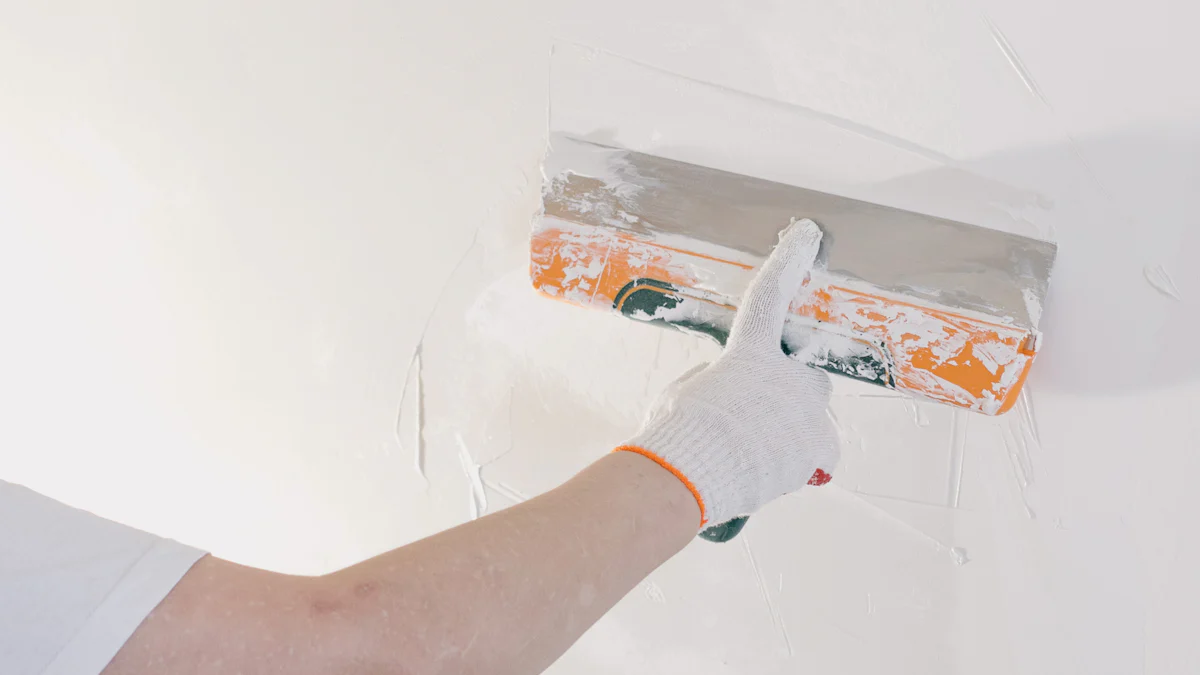
Enhancing the durability and performance of an Engine exhaust manifold goes beyond functionality; it involves the meticulous art of painting an exhaust manifold. Understanding the intricate process and significance is key to achieving a flawless finish. A well-executed paint job not only shields against corrosion but also elevates the aesthetic appeal of your vehicle. Dive into the realm of precision and craftsmanship as we unravel the secrets behind mastering this crucial automotive task.
Preparation for Painting an Exhaust Manifold

When cleaning the exhaust manifold, the initial step involves removing grease and oil effectively. This process is vital to ensure a smooth and durable finish when painting an exhaust manifold. By eliminating any contaminants, the paint can adhere properly to the surface, preventing potential issues in the future. Using suitable degreasers and cleaners specifically designed for automotive applications is recommended to achieve optimal results.
Utilizing a Wax & Tar Remover further enhances the cleaning process by targeting stubborn residues that may be challenging to eliminate with regular cleaners alone. This specialized product helps dissolve tough substances like tar, wax, and other persistent contaminants, preparing the surface of the exhaust manifold for painting. Ensuring a pristine base before proceeding with the next steps is crucial for a professional-grade finish.
In the realm of sandblasting the exhaust manifold, understanding the importance of sandblasting cannot be overstated. This technique serves as a fundamental preparation method before applying paint to the manifold. Sandblasting effectively removes any remaining debris, rust, or old paint layers from the surface, creating an ideal canvas for the new coating. By promoting adhesion between the metal surface and paint, sandblasting significantly contributes to the longevity and quality of the final finish.
Following specific steps for effective sandblasting is essential to guarantee optimal results in your painting project. Begin by ensuring that all safety precautions are in place, including protective gear such as goggles and gloves. Next, carefully adjust the pressure settings on your sandblasting equipment to achieve an appropriate level for your specific manifold material. Proceed with even and consistent movements across the entire surface to avoid uneven textures or missed spots during blasting.
When it comes to masking off areas on your exhaust manifold, precision is key in achieving a clean and professional outcome. Utilize high-quality painter’s tape designed for automotive applications to delineate areas that should remain unpainted during the process. Carefully cover components such as gasket surfaces or threaded holes that should not come into contact with paint to maintain their functionality post-painting.
Ensuring thorough protection of non-paint areas is equally crucial when masking off sections of your exhaust manifold. Use additional protective materials such as masking paper or plastic sheeting to shield surrounding components from overspray or accidental paint application. Taking these meticulous precautions guarantees a seamless transition between painted and non-painted sections on your manifold, elevating both visual appeal and functionality.
Painting Process

Choosing the Right Paint
When considering the High-temperature paint options for painting an exhaust manifold, it is imperative to select a product specifically formulated to withstand the extreme heat generated by the engine. Opting for paints designed to endure high temperatures ensures long-lasting protection and prevents premature deterioration of the coating. Prioritize products renowned for their heat resistance capabilities, as they guarantee optimal performance under challenging conditions.
Exploring various Brands and types of high-temperature paint unveils a plethora of options tailored to meet diverse needs. Conduct thorough research on reputable brands known for producing quality automotive paints that deliver exceptional results. Delve into customer reviews and expert recommendations to identify top-performing products that align with your requirements. Consider factors such as application method, color availability, and durability when evaluating different paint types to make an informed decision.
Applying the Paint
When it comes to Applying the Paint onto the exhaust manifold, choosing between a brush and spray application method depends on personal preference and project specifics. Utilizing a brush offers precise control over the paint application process, allowing for detailed coverage in intricate areas of the manifold. In contrast, using a spray can expedite the painting process by providing uniform coating across larger surface areas efficiently.
Employing effective Techniques for even coverage during painting guarantees a flawless finish on the exhaust manifold. Begin by applying thin, consistent layers of paint to prevent drips or uneven textures from forming. Maintain a steady hand and employ smooth strokes to ensure uniform distribution of the coating across the entire surface. Pay close attention to overlapping each stroke slightly to avoid gaps or missed spots that may compromise the final aesthetic appeal.
Multiple Coats and Drying
Recognizing the Importance of multiple coats in painting an exhaust manifold is crucial for achieving a robust and resilient finish. Layering multiple coats of paint enhances durability and provides added protection against environmental elements and engine heat. Prioritize thorough coverage with each coat to fortify the manifold’s defense against corrosion and wear, ensuring longevity in challenging operating conditions.
Allowing adequate Drying time between coats is essential to facilitate proper adhesion and curing of the paint layers on the exhaust manifold. Follow manufacturer recommendations regarding drying times between applications to prevent smudging or premature damage to the freshly painted surface. Patience during this phase ensures that each coat sets effectively, contributing to a seamless integration of layers that culminate in a professional-grade finish.
Finishing Touches
Inspecting the Painted Manifold
Inspecting the painted manifold is a critical step in the painting process to ensure a flawless finish. Checking for even coverage across the entire surface guarantees that the paint has been applied uniformly, enhancing both the aesthetic appeal and protective properties of the coating. Addressing any imperfections promptly is essential to maintain the integrity of the paint job and prevent potential issues in the future.
To begin inspecting the painted manifold, start by examining it under adequate lighting conditions to identify any inconsistencies in color or texture. Proceed by visually assessing each section of the manifold systematically, focusing on areas where paint application may be uneven or incomplete. By conducting a thorough inspection, you can pinpoint specific regions that require additional attention or touch-ups to achieve a seamless overall appearance.
Addressing imperfections on the painted manifold demands precision and care to rectify any flaws effectively. Utilize suitable tools such as fine-grit sandpaper or detailing brushes to correct minor blemishes or rough spots on the surface. Gently smooth out any irregularities in the paint layer while maintaining a steady hand to avoid causing further damage to surrounding areas. By meticulously addressing imperfections, you can elevate the quality of the finish and ensure a professional outcome that meets your standards.
Curing the Paint
Curing the paint on an exhaust manifold is a crucial final stage that enhances its durability and longevity. Understanding different methods for curing allows you to choose an approach that aligns with your time constraints and desired level of finish quality. Proper curing not only strengthens the bond between the paint and metal surface but also contributes to creating a robust barrier against external elements and heat exposure.
One effective method for curing exhaust manifold paint involves utilizing ambient air drying, allowing sufficient time for each coat to dry naturally before applying subsequent layers. This gradual curing process promotes optimal adhesion and ensures that each coat sets properly, contributing to a durable and resilient finish over time. Patience during air drying is key to achieving a well-cured paint job that withstands engine temperatures and environmental factors effectively.
Alternatively, accelerating the curing process through heat treatment offers expedited results without compromising quality. By subjecting the painted manifold to controlled heat sources such as ovens or heat lamps, you can speed up drying times and enhance paint adherence significantly. This method facilitates rapid curing of multiple coats, reducing overall project duration while maintaining high-quality standards in terms of finish durability.
Ensuring a long-lasting finish on your exhaust manifold involves implementing proper curing techniques tailored to your specific painting requirements. Whether opting for traditional air drying methods or expediting results through controlled heat treatments, prioritizing thoroughness during this final phase guarantees optimal performance and aesthetic appeal in your automotive painting endeavors.
To paint an exhaust manifold successfully, meticulous attention to detail is paramount. Begin by recapping the thorough painting process, from cleaning and sandblasting to choosing the right paint and applying multiple coats. For success, prioritize precision in masking off areas and employing even coverage techniques during painting. Embrace the journey of transforming your Engine exhaust manifold into a work of art by following these steps diligently. Your commitment to excellence will undoubtedly yield a professional finish that enhances both aesthetics and durability.
Post time: Jun-07-2024



